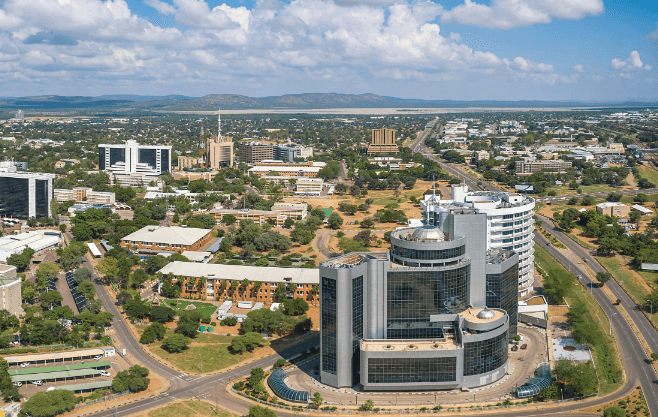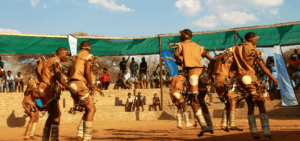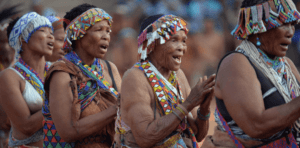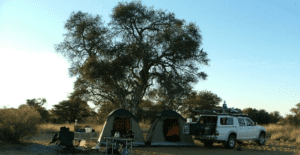“Botswana: From Diamond Wealth to Development Challenges—A Deep Dive into Africa’s Rising Nation”

Botswana, a landlocked gem located in the heart of Southern Africa, shares borders with Namibia, Zambia, Zimbabwe, and South Africa. Despite being largely covered by the vast Kalahari Desert, the country boasts a diverse landscape, including rocky hills in the southeast and the lush Okavango Delta in the northwest, teeming with rich wildlife. This dynamic geography reflects the nation’s journey from one of the world’s poorest countries at independence in 1966 to one of Africa’s fastest-growing economies.
From Poverty to Prosperity
Botswana’s rapid transformation is nothing short of remarkable. Once classified among the poorest nations, the discovery of diamond wealth, coupled with robust institutions and prudent economic management, propelled Botswana’s economy forward. Today, with a relatively small population of about 2.5 million (2022), the country enjoys upper-middle-income status and is ambitiously striving to join the ranks of high-income nations.
However, despite its success story, Botswana remains one of the most unequal countries in the world. This paradox poses significant development challenges, akin to those faced by nations at much lower income levels.
Political Stability: A Democratic Stronghold
Botswana has consistently been recognized for its stable political environment and multi-party democratic tradition, with elections held every five years. The ruling Botswana Democratic Party (BDP) has maintained power since the country’s independence in 1966, contributing to a legacy of peaceful governance.
The nation’s strong political stability is built upon its democratic values and good governance practices, grounded in human rights. These elements have fostered a close bilateral relationship with countries like the United States, which shares an interest in Botswana’s continued success. Together, they work on deepening economic diversification and promoting regional growth and development.
Economic Overview: A Diamond-Driven Economy
Botswana’s macroeconomic policies have long been anchored in prudent fiscal management, largely driven by the lucrative diamond industry. However, over-reliance on diamond revenues—contributing over 90% of the nation’s total exports—makes the economy vulnerable to global shocks. Diamonds may bring prosperity, but they also expose Botswana to significant risks, given the industry’s weak integration with other sectors of the economy.
In 2024, the country is expected to see a slow growth rate of 1%, down from 2.7% in 2023. This deceleration is attributed to a decline in global diamond demand. Yet, growth prospects are projected to rise moderately as global demand for diamonds picks up and efforts to diversify the economy begin to yield results.
Botswana’s inflation rate also saw significant improvement in early 2024, averaging 3.3%, a steep drop from 7.8% in 2023. This decrease was supported by a tight monetary policy and lower fuel prices. The Bank of Botswana responded to these favorable conditions by lowering its policy rate to 1.9%, well below the regional average.
Despite these positive trends, public spending inefficiency and the over-reliance on the public sector pose ongoing fiscal challenges. Improving productivity, enhancing job creation, and bolstering economic diversification—particularly by growing the private sector—are essential for ensuring long-term stability.
Social Challenges: Inequality and Unemployment
Botswana’s impressive economic growth has been overshadowed by persistent inequality and high unemployment rates, especially among the youth. Unemployment reached 27.6% in early 2024, while income inequality remains among the highest in the world, with a Gini index of 53.3. These disparities are exacerbated by structural issues such as the limited labor intensity of the mining sector and the underdevelopment of the private sector.
Climate-related shocks, such as the severe droughts of 2018/19 and 2023/24, have further threatened the livelihoods of many vulnerable communities, disproportionately affecting rural areas. These challenges have been compounded by the lingering effects of the COVID-19 pandemic, which exacerbated poverty and deepened inequality.
Efforts to address these issues include the introduction of a National Social Protection Framework (NSPF) in 2020, aimed at consolidating social protection programs and transitioning to cash transfers. Despite these initiatives, progress has been slow, and further reforms are needed to ensure that Botswana’s social safety nets are both effective and inclusive.
Human Capital: The Road Ahead
Botswana’s Human Capital Index (HCI) score of 0.41 (2020) highlights the need for continued investment in education and healthcare. This score suggests that a child born in Botswana today will only be 41% as productive in adulthood as they could be if they had complete access to quality education and health services. Although this score is on par with the Sub-Saharan Africa average, it falls short of the global standard for upper-middle-income countries.
Improving the quality of infrastructure—particularly water and electricity—and enhancing social services will be critical for Botswana’s future growth. Moreover, accelerating reforms to create a more business-friendly environment and fostering entrepreneurship will help spur job creation, addressing the high unemployment rate and reducing inequality.
Conclusion: Navigating the Future
Botswana’s journey from one of the poorest nations to an upper-middle-income country is a testament to its resilience, natural resource wealth, and sound governance. However, as it faces ongoing challenges related to inequality, unemployment, and climate vulnerability, the need for economic diversification and social reforms has never been greater. With a renewed focus on human capital development and structural reform, Botswana is poised to continue its rise as one of Africa’s most promising nations.




